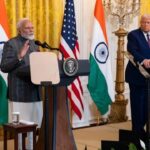EU Tariffs on U.S. Goods showed a united front and approve countermeasures on up to $28 billion of U.S. imports was indicating to a retaliatory response, like China and Canada.
It is a sharp response to Trump administration, especially steel and aluminium tariffs, while putting EU Tariffs on U.S. Goods, EU decide to defend its economic interest by leveraging its market power to pressure the U.S. into reconsidering its aggressive trade practices.
Why Did the U.S. Impose Tariffs?
In 2018, U.S. President Donald Trump invoked Section 232 of the Trade Expansion Act, which citing the national security concerns to impose 25% tariffs on steel and 10% on aluminum imports. This move hit hard to some US allies, including EU.
In EU perspective this move is seem as economically harmful but also diplomatically provocative. In response, EU leaders moved to present a united front, developing a counter-tariff strategy, this respond of EU is showing that they send a strong political message without escalating into a full-scale trade war.
What Was the EU’s Response?
EU’s approach is shaping to be both measured and strategic. Initially approving €2.8 billion ($3.3 billion) in retaliatory tariffs that is part of a broader package which scale up to $28 billion. If we see, the EU particularly selected the products to maximize political impact while minimizing economic damage in domestic.
In reuters, one EU diplomat said, “Our biggest fear after Brexit was bilateral deals and a break of unity, but through three or four years of negotiations that did not happen. Of course, here you have a different story, but everyone can see an interest in a common commercial policy.”
Consumer and Iconic Goods in the Crosshairs
EU targeted the most high-profile US goods which will impact badly on US
Bourbon whiskey – largely produced in Kentucky were hit by this move
Jeans – brands like Levi’s are biggest manufacturer of jeans, the product supply is all over the world including India. Now hit by this move because close association with American culture.
Motorcycles – including Harley Davidson based in Wisconsin, where then-House Speaker Paul Ryan resided.
By targeting products intentionally with political symbolism and regional economic significance is the selective move to hope for applying domestic political pressure within the U.S.
Agriculture and Industrial Products Also Hit
- Peanut butter, orange juice, and cranberries
- Steel and aluminum goods
- Boats and industrial machinery
The products were hit hardly with EU Tariffs on U.S. Goods in both industrial and consumer goods, now EU scoped that American sectors would feel the impact.
How Does This Compare to China and Canada?
The EU’s move followed a broader pattern of retaliation measure from major U.S. trading partners like China and Canada
China is targeting high demanded products like soybeans, autos, and electronics.
Canada responded harshly with tariffs on $12.6 billion in U.S. goods including ketchup, coffee, and steel products which is mostly impacted on US economy.
In both cases the response is not only economical but geopolitical indicating resistance to US trade movement and an effort to uphold multilateral trade norms.
Read also: Liberation Day: Will Trump’s Big Change Consolidate $2 Trillion of Peacetime debt and deficits?
Why This Matters for Global Trade
The EU’s coordinated countermeasures served as a clear statement of unity and resolve in the face of U.S. protectionism while no direct threat to escalate the framework of international trade law.
As global trade tensions grew, the EU’s response showed careful planning, smart use of trade rules, and a clear message to the U.S. to show that “EU still an important player in the world economy because of their big market value.”
EU showed unity, defended fair trade, and proved its global trade power.









